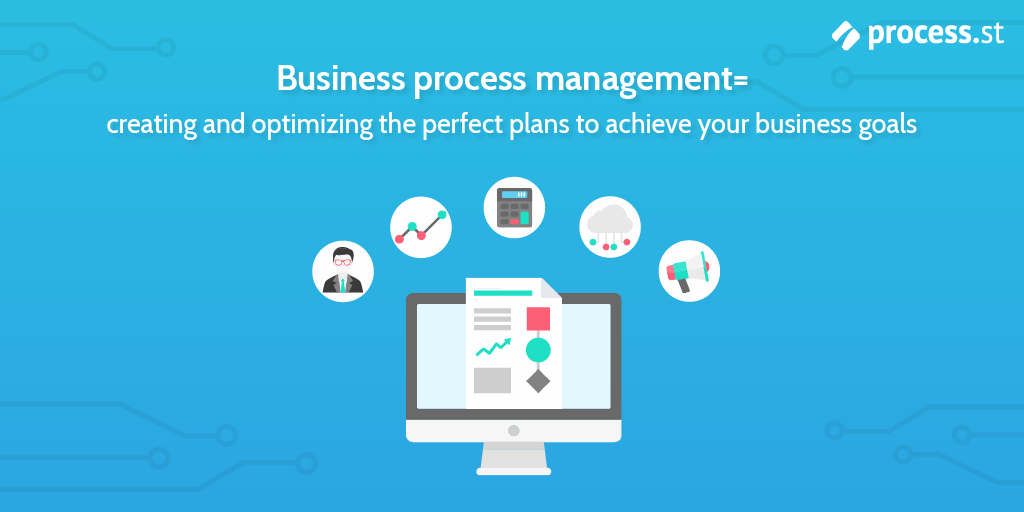
This is a guest post from Jessica Thiefels. Jessica specializes in link building, social media strategy and content strategy. You can find her at Jessica Thiefels Consulting or @JThiefels.
While the term “business agility” can sound like just another buzzword, the idea behind this phrase can be key to the success and growth of your small business.
“[Business agility] refers to distinct qualities that allow organizations to respond rapidly to changes in the internal and external environment without losing momentum or vision” – HR Zone, What is Business Agility?
In other words, business agility is the effectiveness with which you make improvements and adaptations in your current methods or processes. This allows you to grow and stay ahead of your competition.
However, it also requires efficiency in nearly every area of your business, from talent acquisition, retention and operations, to infrastructure, leadership and customer relations.
To help overcome these trials, I’ve gathered four highly actionable steps to let you increase business agility and scale your small business.
4 actionable steps to increase business agility
Develop a Synergized Team
If you want to create a productive culture, you need to attract the right employees. This doesn’t necessarily mean choosing staff based on a fixed, precise outline of skillsets, but rather, building a team of iconoclasts who aren’t confined to one specific area of expertise. This is what drives synergy, which Elena Carstoiu, COO of Hubgets, says “represents a whole that is greater than the sum of its parts.”
To do this, look to hire for creativity, collaboration and curiosity, suggests Jeff Gothelf, executive coach.
“… seek out the nonconformists—the candidates that don’t fit easily into a box. These are the generalists with an entrepreneurial spirit. They’re the multi-faceted tinkerers who have specialized in a discipline like design but turn out to be pretty good coders.” – Jeff Gothelf, Bring Agile to the Whole Organization
These skills are soft skills, and 57% of leaders in LinkedIn’s Most In-Demand Hard and Soft Skills say that soft skills are more important than hard, with the top five soft skills being:
- Creativity
- Persuasion
- Collaboration
- Adaptability
- Time Management
Hiring for these skills, rather than simply looking for highly-trained employees with specific hard skills, allows teamwork to develop across departments or disciplines. Rather than being hyper-focused in one area or the next, the marketer connects with the developer because she has dabbled in development, and therefore they work together more naturally.
When your team is synergized and connected in this way, it’s easier to innovate and be agile because there are fewer obstacles to overcome. By hiring for these soft skills, you develop a team that can find this synergistic rhythm easier, filling in gaps and creating a whole that works more efficiently than each individual part.

Streamline Communication with Technology
A key aspect of developing this synergy is collaboration. Carstoiu continues, “Synergy is achieved when the outcomes of team effort are better than they would have been if team members had worked separately. Great outcomes, and therefore team synergy, can only be achieved when people unite their forces in an exemplary demonstration of collaboration.”
While most companies use email to talk every day, for much of the day—in 2018 there were 124.5 billion business emails sent per day—this mode of communication doesn’t always lead to agile business processes. There tends to be a lag in responses and regular miscommunication, not to mention, inbox overload means emails get lost often and easily.
That’s where chat software comes into the picture—this type of tool not only facilitates faster and more effective communication, but it fosters something an agile business needs: collaboration. This is especially true for companies who employ both in-house and remote employees, leaving plenty of room for miscommunication and slow response times.
Carstoiu explains; “We should not lose sight of the fact that collaboration stands at the core of healthy team dynamics, and company development. When encouraged to collaborate, remote employees can start working as a team, become more effective, and more productive.”
When you invest in a tool that allows your team to connect in real-time, you make room for a more agile way of doing business; one that promotes efficiency and productivity. Instead of waiting for hours on a simple response, employees can connect quickly and easily. Plus, features like chat groups allow teams to stay connected, no matter where everyone is working from.
Empower Your Employees
Take a hard look at the organizational roles that have been set out within the company. Robust leadership may feel like it’s maintaining stability and efficiency.
Yet, a strict hierarchy, based on traditional management style, often leans on “command and control” directives to make sure employees reach the bottom-line, as the author of The Age of Agile, Steve Denning, points out. Denning continues to explain that this can be “dispiriting for staff” and decreases their engagement.
Instead, take an open-minded approach.
Focus on empowering your team to make their own informed decisions on how systems can be optimized. Find more ways to work together with each team or employee, rather than dictating commands. Sometimes, employees are the ones with the ideas that crack the code, and if they’re not empowered to share, you may struggle to grow a thriving and innovating business.
For example, the 3M Post-It note was discovered by an employee, Arthur Fry, who knew the sticky adhesive had been invented by a former employee but was not being used. He used it to mark the pages in his hymnal, and when the idea of the post-it note was brought to management, it was almost passed by.
“The 3M company was initially skeptical about the product’s profitability, but in 1980, the product was introduced around the world. Today, Post-it notes are sold in more than 100 countries,” – How Stuff Works, 9 Things Invented or Discovered by Accident

This was a happy accident, but keeping your business agility high means you make an active effort to encourage these ideas, rather than waiting on leadership to come up with them. Facilitate this with scheduled brainstorming meetings or by implementing an intrapreneur program, like Google, Sony and Facebook.
If you’re not ready to start an intrapreneurship initiative, there are many ways to encourage employees to keep this mindset in the workplace.
Encourage failure. A company that’s growing is going to fail along the way. Let employees know that this is okay—taking calculated risks is a reality of being successful.
Welcome opinions and ideas. Keep an open forum for all ideas, whether they come in a meeting or an employee comes knocking on your door with one. Make this a key part of your culture and instill psychological safety to ensure employees feel they can share their ideas.
Have trust. You hired your employees for a reason. Trust that they’ll do their job well based on the strengths you saw in them during the interview process.
Remember the Seven Dimensions

Ultimately, business agility means you are able to pivot with speed and efficiency to accommodate the diverse, multifaceted demands of your customers. In order to be relevant and competitive in the marketplace, the structure of your organization must also be adaptable. While all of the ideas here will ensure that your company is agile and adaptable, a framework can help bring structure to your efforts, ensuring you address every area of the business.
To ensure agility remains at the forefront of your business model, bring the “seven dimensions” into your business, as suggested by Dr. Tim Baker, of What Does Agile Performance Mean?. Those seven dimensions are:
Innovation: This refers to delivering the newest and most superior products and services on the market in response to evolving customer needs.
Processing: This refers to accelerating and updating all aspects of your business infrastructure, from onboarding to manufacturing to expanding.
Recovery: This refers to addressing customer-related issues in a timely, proficient manner, increasing the likelihood of customer retention.
Continuous Improvement: This refers to building on the advancements of a product that already exists, much like Apple has done with the iPhone.
Customer Responsiveness: This refers to interfacing with customers to answer questions, assist with needs or troubleshoot concerns in a streamlined fashion, keeping them satisfied and continually choosing your business above others.
Problem Solving: This refers to seeking and initiating creative solutions that rectify common workplace dilemmas, allowing you to maximize productivity.
Changing Direction: This refers to making critical shifts with any method or procedure that has become ineffective and obsolete.
The impact of BPM software on business agility
Business process management (BPM) software is becoming an essential component of modern businesses due its ability to improve the efficiency of day-to-day operations as well as long-term strategic projects.
The rate of growth expected for the market is staggering, as its value is predicted to increase from $9.1 billion in 2018 to $14 billion by 2021. The growth of the market as a whole has been steady as more businesses realize the power of documenting and managing their processes.

The following are some of the main near-term and long-term benefits of integrating BPM software into your business. You can clearly see how they are connected to business agility.
Near-term benefits:
- Responsible individuals are notified of new tasks and have a centralized view of all current and upcoming assignments to manage their work
- Tasks are consistently routed appropriately throughout the organization
- Redundant tasks can be easily identified and automated
- Uncompleted tasks can be followed up on in a timely fashion
- Managers can see the “big picture” of work activity in their team (better visibility and accountability)
Long-term benefits:
- Risk mitigation (less human error)
- Effective resource allocation
- Easy to scale
- Process flexibility
- A culture of accountability and transparency
- Workflows can be internally audited for continuous improvement
- Leveraging real-time performance metrics
Process Street is a simple BPM tool that was built to help businesses create, execute, and optimize their workflows.
By documenting your workflows in digital checklists, you are instantly creating an actionable workflow in which tasks can be assigned to team members, automated, and monitored in real-time to ensure they are being executed in the way they are intended to be, each and every time.
The point is to minimize human error, increase accountability, and provide employees with all of the tools and information necessary to complete their tasks as effectively as possible.
The bottom line
If the objective for your small business is to grow exponentially this year, it’s time to get agile in how you run your business and encourage employees to work.
Having business agility and being adaptable in our ever-changing, fast-paced world allows you to stay ahead of your competition, growing and thriving in the face of change, rather than falling behind. Use these ideas to streamline communication, develop a synergized team, and create a framework for continued synergy.
Do you have any other tips on how to up business agility? We’d love to hear them in the comments below!







 Workflows
Workflows Projects
Projects Data Sets
Data Sets Forms
Forms Pages
Pages Automations
Automations Analytics
Analytics Apps
Apps Integrations
Integrations
 Property management
Property management
 Human resources
Human resources
 Customer management
Customer management
 Information technology
Information technology



Alex Gallia
Alex is a content writer at Process Street who enjoys traveling, reading, meditating, and is almost always listening to jazz or techno. You can find him on LinkedIn here